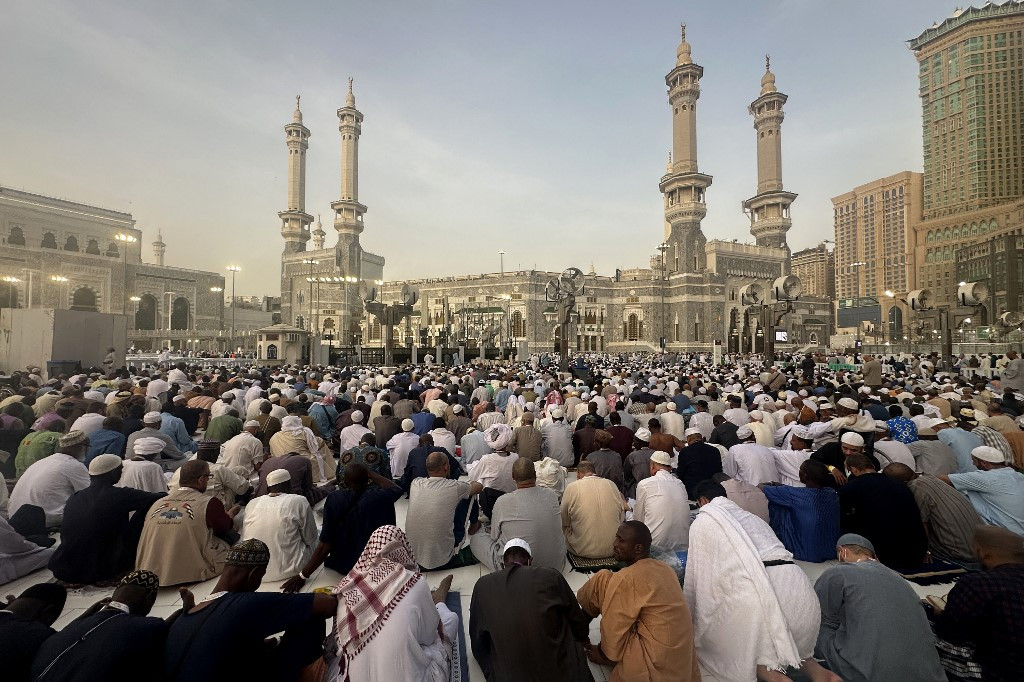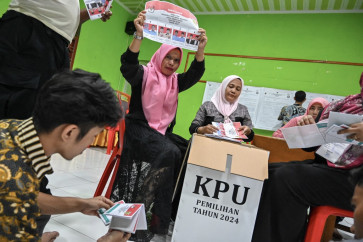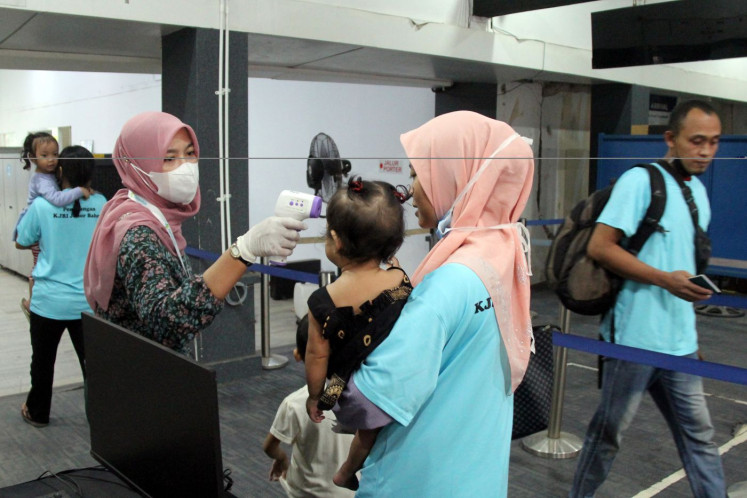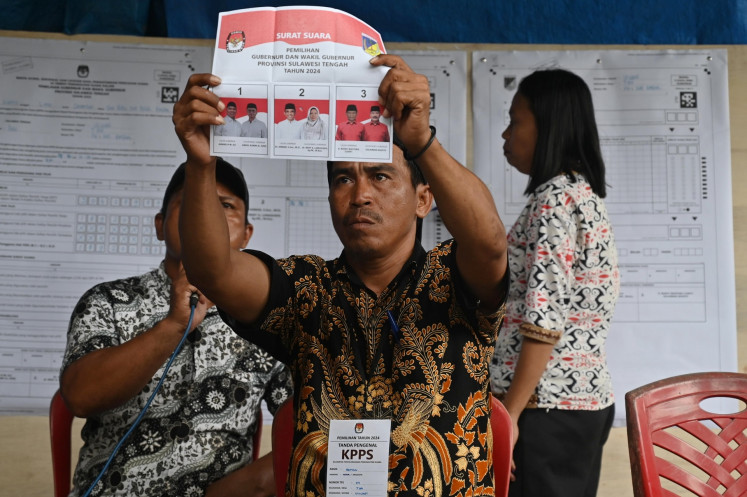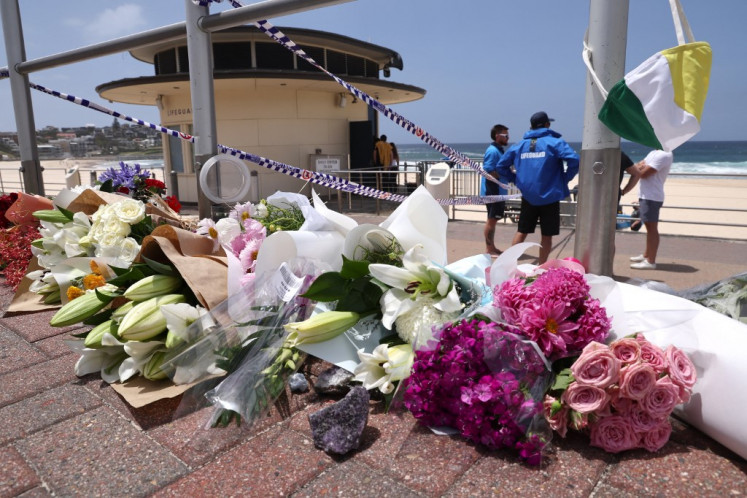Popular Reads
Top Results
Can't find what you're looking for?
View all search resultsPopular Reads
Top Results
Can't find what you're looking for?
View all search resultsHaj and umrah ministry: Caring for the faithful
The formation of a haj and umrah ministry reflects a domestic commitment to improving religious services and a broader diplomatic effort to elevate Indonesia’s role in global religious affairs.
Change text size
Gift Premium Articles
to Anyone
E
ach year, more than 250,000 Indonesians travel to Saudi Arabia for the haj, while millions more undertake the umrah or minor pilgrimage. As the world’s largest Muslim-majority nation, Indonesia contributes the largest single group of pilgrims.
Yet for many, the journey of a lifetime is clouded by waiting lists that stretch decades, fluctuating costs, inconsistent services and the risk of fraud.
President Prabowo Subianto’s decision to establish a haj and umrah ministry is more than a strategic response. It is a visionary move to meet the aspirations of millions of Indonesian Muslims. It reflects a domestic commitment to improving religious services and a broader diplomatic effort to elevate Indonesia’s role in global religious affairs.
For decades, the pilgrimage was managed under the Religious Affairs Ministry. But the scale and complexity of today’s challenges demand a specialized institution with focused authority and attention.
To put it in perspective, the haj and umrah business in Indonesia is massive and rapidly growing. According to studies, the economic turnover from this ecosystem is projected to increase from Rp 65 trillion (US$4.14 billion) in 2023 to Rp 194 trillion by 2030, a growth of nearly 200 percent.
Historically, haj governance in Indonesia has been shaped by colonial legacies. During the Dutch administration, thousands of “Javanese pilgrims” traveled under perilous conditions, facing overcrowded steamships, cholera outbreaks and minimal medical support.
In response, the Dutch imposed strict controls. The 1825 haj ordinance required permits, and by 1903, only designated ports and licensed ships could be used. Quarantine stations like Onrust Island were established to contain disease.
These measures, documented in colonial archives and scholarly works, reveal how pilgrimage management was intertwined with surveillance and governance.
After independence in 1945, the new state inherited this responsibility. The newly formed Republic placed haj administration under the Religious Affairs Ministry, asserting sovereignty and signaling that the dignity of pilgrims would no longer be outsourced.
In the 1960s and 1970s, rising pilgrim numbers prompted reforms. Indonesia introduced quota systems in 1969, and national flag carrier Garuda Indonesia began to dominate haj flights, marking a shift toward logistical and operational control.
The 1980s and 1990s brought new challenges. Scandals involving abandoned pilgrims exposed the risks of unregulated private travel agencies. In response, the government tightened oversight and introduced a savings scheme to help pilgrims prepare financially. These reforms acknowledged that haj management required not only religious sensitivity but also financial prudence and consumer protection.
In the 2000s, decentralization reshaped administration. Local offices took on registration duties, democratizing access but also creating disparities in service quality. Waiting times stretched beyond a decade, underscoring the need for a more centralized and equitable system.
The 2010s saw the codification of state responsibilities through the 2008 and 2019 Haj Laws, mandating transparency, financial governance and health safeguards. The establishment of the Haj Financial Management Agency (BPKH) in 2017 was a landmark reform, creating a dedicated body to manage billions in pilgrim funds.
The COVID-19 pandemic in the early 2020s exposed vulnerabilities in global haj coordination. The suspension of pilgrimages forced a national reckoning: Indonesia needed a more resilient, responsive and specialized institution.
In 2025, President Prabowo initiated the creation of the Haj and Umrah Ministry, with broad House of Representatives’ support. This move was not merely administrative, it was transformative. It recognized that haj governance is a core function of statecraft, diplomacy and public service.
Other countries offer valuable models. Malaysia’s Tabung Haji integrates sharia-compliant savings with comprehensive services. Iran assigns trained leaders and medical teams to each group. India uses digital lotteries and grievance systems to ensure fairness. Turkey mandates standardized pre-departure training, while Nigeria balances federal oversight with local implementation.
Even non-Muslim nations provide insights: India’s Kumbh Mela uses artificial intelligence and temporary infrastructure to manage millions, Japan’s festivals emphasize volunteer mobilization and disaster preparedness and Singapore and Australia apply rigorous health protocols to mass events.
Looking ahead, Indonesia is expected to adopt full digital registration, AI-assisted quota allocation, and integrated health screening in collaboration with Saudi Arabia. By 2045, the centennial of independence, Indonesia aims to become the global benchmark for haj and umrah management, efficient, transparent, financially sustainable and a model of religious diplomacy.
A dedicated ministry would advance Indonesia’s interests in three key areas.
First, transparency and fairness: With waiting lists exceeding 30 years in some provinces, centralized management is essential to ensure equitable access and prevent exploitation. Second, health and safety: Indonesia has one of the oldest pilgrim populations in the world. Mandatory screenings, pre-departure training and coordinated medical support are vital.
Third, economic stewardship: Haj and umrah services generate billions annually. A ministry could professionalize fund management, safeguard savings and reinvest resources into national development.
As Indonesia approaches 2045, the Haj and Umrah Ministry represents more than bureaucratic reform, it embodies a vision of religious service as a pillar of national progress. By modernizing pilgrimage governance, Indonesia will honor the dignity of its citizens and set a global precedent for how nations care for their faithful, with efficiency, transparency and respect.
***
The writer is head of the International Relations Study Program at Al-Azhar University Indonesia, Jakarta.

